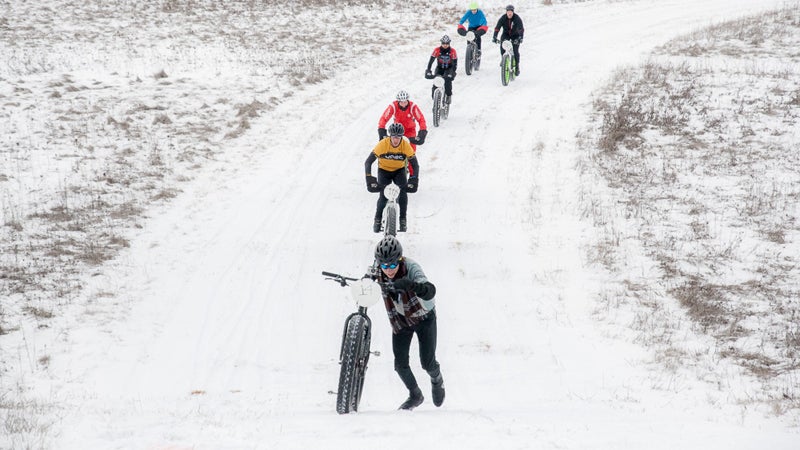Cold-weather dwellers love to gripe about the winter. Sure, itÔÇÖs chilly. Yes, itÔÇÖs dark. And I know, I know, weÔÇÖre all counting down the days until the paddling, climbing, and biking season starts up again. But hereÔÇÖs the dirty secret that Alaskans, Minnesotans, and Canadians have been hiding from the tanned masses further south for years: For outdoorsy types, winter kicks ass. When the earthÔÇÖs surface freezes over, all kinds of possibilities open up: new terrain, new sports, new ways to get an adrenalin kick, and new ways to wind down when the day is through.
If youÔÇÖve been hibernating indoors through the wintersÔÇöor sucking back watered-down pina coladas at an all-inclusive resort somewhereÔÇöyouÔÇÖve been missing out. Consider this your North American winter bucket list, and get started: YouÔÇÖve got some catching up to do.
Cycle-Tour an Ice Road (Northwest Territories)
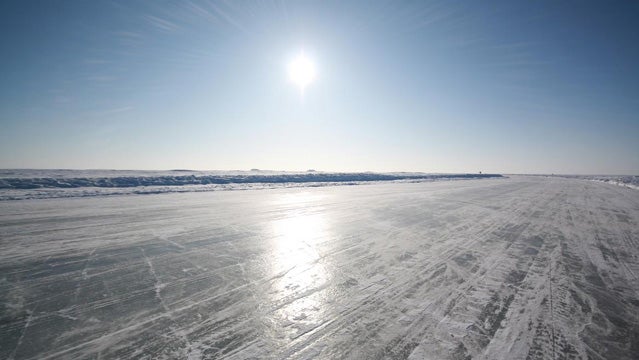
Forget about ice-road trucking: For the full ice road experience, leave the heated cab behind and pedal the frozen thoroughfares of the Far North instead. One good bet is the 120-mile winter road that connects Inuvik, a large town in the Mackenzie Delta of Canada’s Northwest Territories, with the village of Tuktoyaktuk, on the shore of the Arctic Ocean. The road, which is open from roughly December to April, follows the frozen Mackenzie River as it widens and spills into the ocean; it’s broad and flat, offering cyclists plenty of room to steer clear of passing trucks. Another major ice road begins in Yellowknife, NWT, and travels to the diamond mines a couple hundred miles north.
Spend a Night in an Ice Hotel (Quebec City)
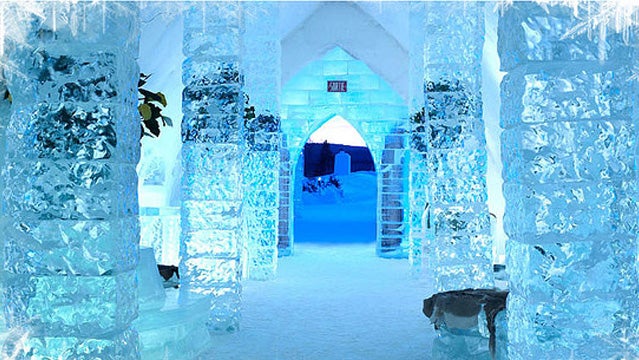
If you’ve ever snuggled into a good sleeping bag on a chilly night in the backcountry, you know how satisfying that warm-inside, cold-outside combo can be. Take it to a new level by zipping yourself into an arctic-grade sleeping bag in a suite built entirely from ice and snow.┬á
Scandinavia has a whole array of frozen hotels to choose from, but Quebec City’s is North America’s one and only. It’s open from early January to late March each year, and besides its icy rooms (available in standard and themed variations) it also offers cocktails in frozen glassware and an outdoor spa and sauna. Packages including a room, meals, and spa access begin at $400 per person, but be sure to check the promotions page, where prices sometimes drop much lower.
Oh, and don’t worry: The bathrooms are heated.
Test Drive the Continent’s Best Terrain Parks
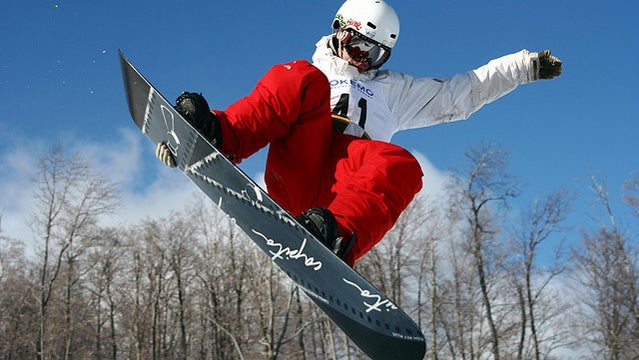
Sure, snowboarding got its start out eastÔÇölook up “snurfing,” if you haven’t already, to learn all about Michigan’s (yes, really) role in its birthÔÇöbut the western half of the continent has adopted the sport as its own. Vail was one of the first major resorts to embrace snowboarders instead of shunning them, and these days Colorado continues to provide some of the best terrain, for both boarders and jump-happy skiers. Check out Aspen’s Buttermilk, longtime site of the Winter X Games, head to Keystone or Breckenridge, and don’t forget the original home of the terrain park, Vail.
California is another terrain park leader: Mammoth Mountain and Tahoe’s Northstar and Heavenly are good bets. British Columbia’s Whistler Blackcomb and Park City, Utah, round out the top terrain picks.
Tackle a Winter Triathlon (Ottawa, Ontario; Canmore, Alberta)
This young sport may have been denied a spot in the 2014 Sochi Olympics, but that’s not stopping the athletes who complete the grueling run-bike-ski combo races across a snow-covered course each winter. (In some events, the snow-biking leg is replaced by a speed-skating leg.)┬á
Want to give it a shot? Try Ottawa’s , held during the Canadian capital’s Winterlude festival each February. This year’s race takes place on February 2, and includes an 8k skate, 5k ski, and 5k run. The race can be run solo or as a co-ed three-person relay team. Another option is the Canmore , in the Alberta Rockies. The full-distance race includes a 10k ski, 10k mountain bike, and 5k run, and the novice course cuts the ski and bike distances in half. This year’s race goes on March 31.
Camp Out in the Cold
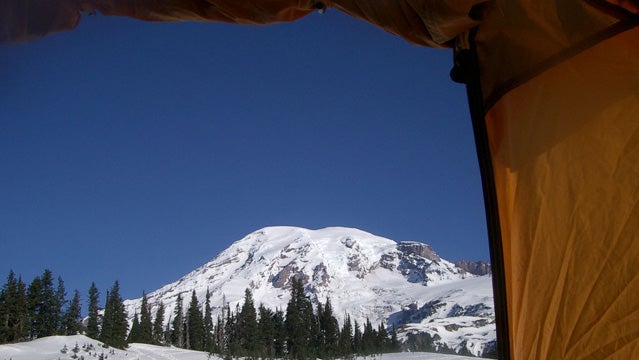
Winter camping is a rite of passage for cold-weather enthusiasts. And, as Buck Tilton and John Gookin point out in their National Outdoor Leadership School (NOLS) to winter camping, it has some clear advantages over the summer variety: no bugs, no bears, and no crowds. It also comes with its own dangers and challenges. Here’s Tilton and Gookin with a reminder that we’re not really built for extreme cold:
“Even though humans have livedÔÇösometimes flourishedÔÇöfor thousands of years in regions where winter never leaves, they have not had eons to adapt physiologically. Some peoples with long cultural histories of exposure to the cold have grown shorter and chubbier, making it easier to retain body heat. Their cardiovascular systems may send warm blood to the exterior more readily, preventing fingers and toes from freezing. They may have higher-than-normal basal metabolic rates to generate more internal heat, even at rest. But they have yet to grow the dense, insulating fur or blubbery fat of arctic animals. To compensate for this lack of adaptation, humans have had to start using their brainsÔÇöthe only part of the body that allows us not only to exist but to live happily in winter.”
Using your brain means knowing what you’re getting yourself intoÔÇöthink avalanche preparedness and crevasse rescue skills, if you’re in mountain and glacier countryÔÇöand bringing the right tools. ║┌┴¤│ď╣¤═°’s Gear Guy breaks down his winter camping must-haves.
Lace ‘Em Up for Some Serious Pond Hockey (Minneapolis, Minnesota)
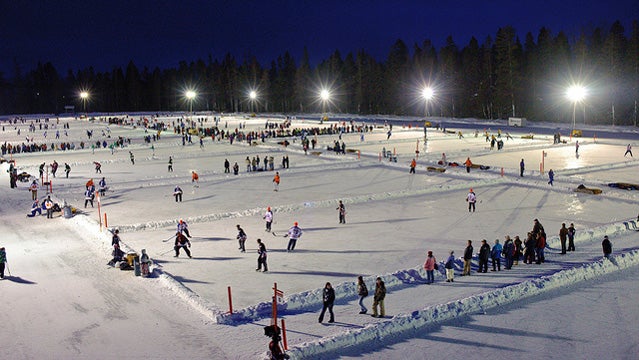
Call me biased (or just call me Canadian), but I say there’s no more iconic winter sport than hockeyÔÇöand hockey done right means hockey played outdoors.
Find yourself a frozen pond, lake, river, or oversized puddle, lace up your skates, drop a puck, and go. But if you really want to get serious, sign up a team for one of North America’s major annual pond hockey tournaments. One of the biggest, the , takes place each year on Lake Nokomis, in Minneapolis, Minnesota; the Open Division usually includes a bunch of one-time pros but there are also 40-plus, 50-plus, women’s, and “rink rat” divisionsÔÇöthat last one is for those who “may not have the skills to take on former NHL players.” This year’s tournament runs January 18-20, 2013.
Drive (and Carve) B.C.’s Powder Highway (British Columbia)
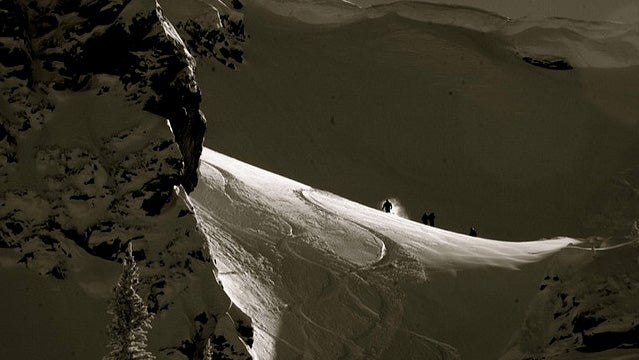
Skiers in southeastern British Columbia are spoiled rotten. The “powder highway” runs through the heart of the region: It’s a loop (actually made up of several different roads, not one single highway) that spans a couple hundred miles, and it’s home to no less than eight traditional ski resorts, nine heli operations, 16 cat-ski outfits, and 20 backcountry skiing lodges. The resorts include Kicking Horse, Revelstoke, and FernieÔÇöyou might have heard of them?
Learn to Mush (Yukon)
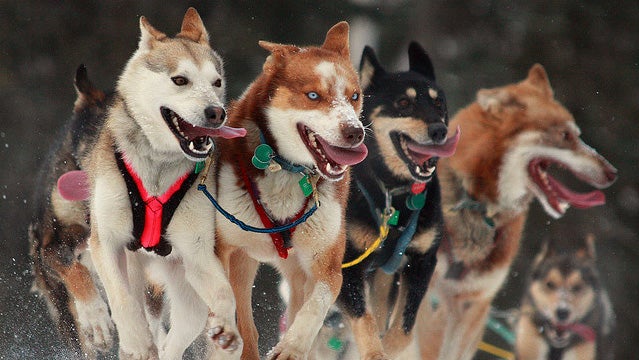
Do you dream of gliding through the snowbound wilderness behind your very own dog team, but don’t know your tug line from your snow hook, or your wheel dog from your lead dog? Not to worry: There’s a mushing school for that.
Just outside Whitehorse, in the Yukon Territory, Yukon Quest veteran and former champion Frank Turner runs Muktuk ║┌┴¤│ď╣¤═°s. Like many mushers, he offers the usual selection of half-day and full-day guided tours, but Muktuk also offers a six- or nine-day “,” where you learn to drive your own team. Spend your days outdoors on the frozen Takhini River, and your evenings in the lodge, cozying up to the fireplace with a collection of Turner’s canine retirees. Packages start at $1,800 for the six-day option, and include lodging, meals, gear, and an airport pickup. Higher-end packages include an overnight camping trip with your teamÔÇöyour own mini-Iditarod.
Hit the Hot Springs
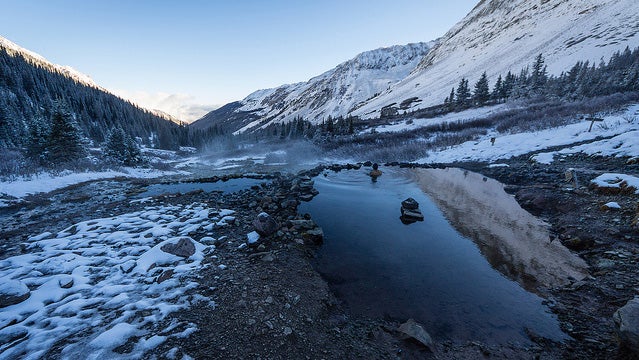
Why would you soak in the summer when you can head to the hot springs in winter instead, and submerge yourself in a steaming pool while ice crystals form in your hair?
Some natural hot springs remain incredibly basic: a hand-built wall of rocks to keep the warm water pooling in one area before it flows away. Others are so developed that they might as well relocate to the Wisconsin Dells. Personally, I like the springs that land somewhere in the middle, with a few amenitiesÔÇöchanging rooms, towels, showersÔÇöbut a mostly natural setting.
Colorado’s Conundrum Hot Springs falls at the undeveloped end of the spectrum. Near Aspen, they’re reached by an 8.5-mile hiking trailÔÇöno chlorinated water or accompanying day spas here.
The three Rocky Mountain hot springs maintained by Parks Canada are more built up: Radium Hot Springs, in Kootenay National Park, is Canada’s largest hot springs pool. Banff Upper Hot Springs is right in town, and has been warming visitors’ bones since the 1880s, while Jasper National Park’s Miette Hot Springs is a bit more remote.
Thermopolis, Wyoming, is a town dedicated toÔÇöand named forÔÇöits hot springs. There are a couple of private, developed pools here, but the State Bath House, in Hot Springs State Park, is free.
Snowshoe Bryce Canyon (Utah)
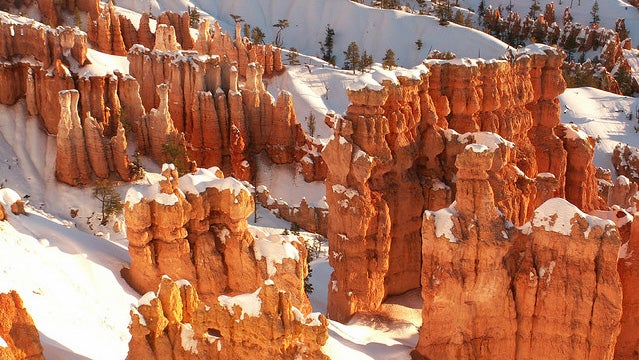
Utah’s is an incomprehensible, alien landscape of twisted hoodoosÔÇöand a dusting of snow only heightens its eerie beauty. There are weekly ranger-led snowshoe hikes at the park in winterÔÇöwith snowshoes courtesy of the NPSÔÇöor you can rent gear from Ruby’s Inn, just outside the park entrance, and venture in self-guided.
Go Ice Canoeing on the Saint Lawrence (Quebec City, Quebec)
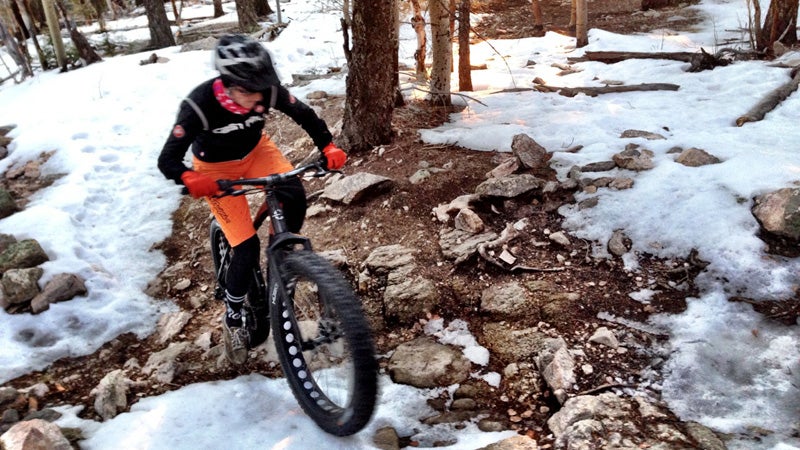
Imagine, if you will, a sport that combines canoeing and bobsleddingÔÇöthe grit-your-teeth-and-push part, not the wild, high-speed ride. Add in an unpredictable mixture of floating sea ice and open water, and you start to get the picture. Quebec City’s annual ice canoe race, part of its famous winter , sees racers pushing and paddling their canoes across the half-frozen, tidal Saint Lawrence River. When there’s ice to walk on, they push, and when the water opens up, they hop in and paddle. Sometimes, they muddle through the slush doing a bit of both. Death trap? Maybe. But it sure looks like fun. This year’s race takes place on the second weekend in February.
Have a Cold One
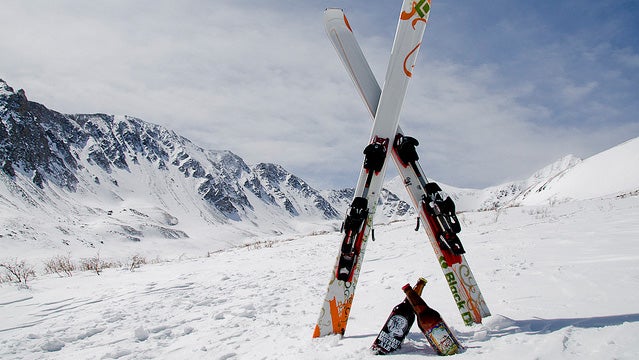
What’s the best place to drink a cold beer in the depths of a cold winter? That’s a tough call, because America’s snowier states are churning out great craft beer.
For extreme coldÔÇöas low as -50 degrees Fahrenheit if you time it rightÔÇöstart at Silver Gulch Brewing and Bottling. Just outside Fairbanks, Alaska, above the 64th parallel, it’s North America’s northernmost brewery. Further south, in Anchorage, Midnight Sun Brewing is quirky and innovativeÔÇöwarm up with a Panty Peeler Tripel, flavored with orange peel and coriander. Juneau’s Alaskan Brewing is the king of 49th-state beer, and obviously a winter visit to the brewery calls for a Winter Ale.
Colorado is America’s craft beer heartland. New Belgium, in Fort Collins, is an old standby. Meanwhile, every ski town in the state seems to have its own brewery: Try Aspen Brewing, Breckenridge Brewery, or Durango’s Steamworks Brewing.
Further east, I’ve always been a fan of Vermont’s Magic Hat Brewing Company. New Glarus Brewing, in Wisconsin, is famous for its Raspberry Tart ale. And in Kalamazoo, Michigan, Bell’s Brewery has a whole menu of seasonal stoutsÔÇöthe unofficial beer of winter.
See the Northern Lights (Alaska; Northwest Territories)
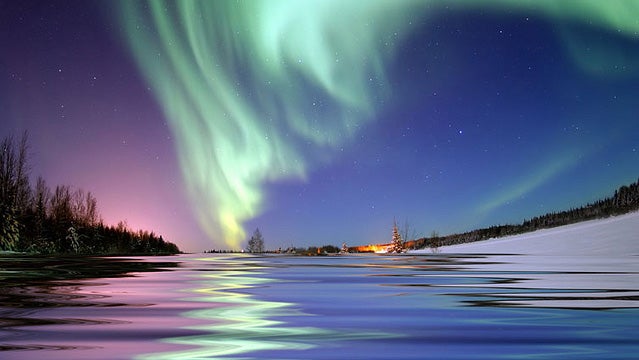
The first time I saw the Northern Lights in their full gloryÔÇöI’m talking the real show, not just a faint, colored smudge on the horizonÔÇöI was in Yukon-Charley Rivers National Preserve, deep in the Alaskan interior. I’d stayed up late three nights running hoping to see them, and finally there they were. Just two green curving lines on the northern edge of the sky at first, their ends curling and reforming, then expanding into a series of long parallel streaks stretching from horizon to horizon like the lines on a blank page of sheet music. The ends vibrated, sometimes lengthening the line with their motion and sometimes rolling it back up again.
Never mind that one of the old Alaska hands I was sharing a public use cabin with declared that unless the lights appeared in multiple colors, they weren’t “worth getting dressed for.” The all-green show was enough for me. I stood with my head back and watched as the lines became fat spirals and then short, medium, long lines again, until my neck ached and my fingers started to go numb inside my sheepskin mitts. They were worth the wait.
If you’re going to go on your own aurora hunt, this is a good year to do it. The magnetic activity that causes the show is cyclical, and the upcoming season has been dubbed “aurora max” because we’re at a high point in the cycle. Fairbanks, Alaska, and Yellowknife, Northwest Territories, are your best jumping-off points for aurora viewing.
Build Your Dream (Snow) Home
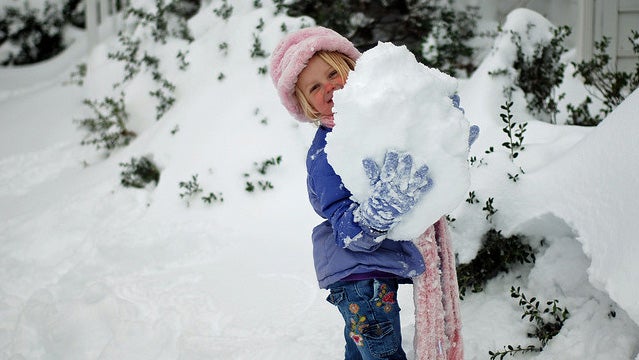
Growing up in Canada, my vision of an ideal snow fortress was formed early, the first time I saw a Quebec-made movie called La Guerre des Tuques, or, in English, The Dog Who Stopped the War. A whole generation of Canadian kids was raised on this flick, in which a small group of misfits builds the world’s most epic snow fort to defend themselves against a bunch of snowball-hurling bullies. Cue the siege and a fight to the bitter, snowy end.
The key to a good snow fortÔÇöbesides good snowÔÇöis planning. Decide on your fort’s footprint, and clear the area, then start building the walls. Solid walls take time, so don’t rush. The simplest way is to roll giant snow balls, the way you would for a snowman, and use them as building blocks for your wall. Pack them tightly together, both side by side and, as you add higher layers, fill any gaps with more snow. There are whole schools of thought about watering your finished walls to strengthen themÔÇöa little water can seal the wall up nicely, but too much water can melt the snow, or create an icy fort interior. That’s no good when the time comes to start tossing snow grenades over the walls.
Hunker Down Over a Hole in the Ice
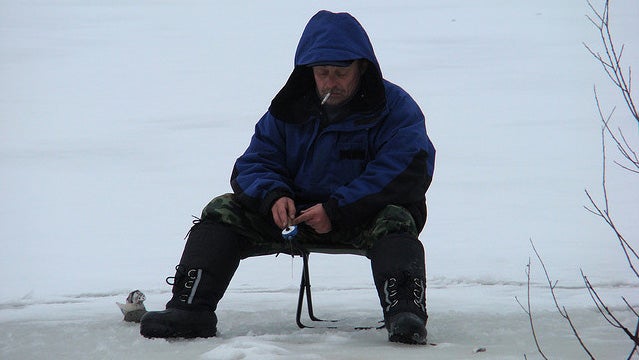
A lot of winter activities involve speed or adrenalin or both: Think heli-skiing, bobsledding, ice climbing. Ice fishing is a little more zen. Waiting for the fish to biteÔÇöand trying not to freezeÔÇöleaves plenty of time to ponder the nature of existence, or to crack a beer or three.
The west dominates the mountain sports, but for serious frozen fishing, head east to the Great Lakes states, Ontario and Quebec, Vermont, and upstate New York. Local angling associations and tourism boards will have the latest info on hut rentals and hot spots.
Ski, Shoot, Repeat (Whistler, British Columbia)
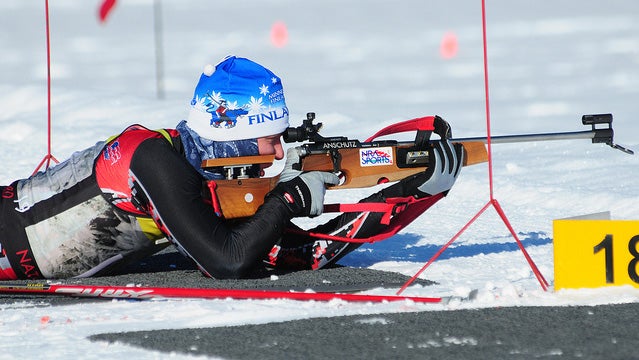
Okay, so maybe mixing cross-country skiing and target shooting is a little weird. At the very least, biathlon has got to be the only competitive shooting event conducted entirely in spandex. But if it’s good enough for the Olympics, it’s good enough for me.
There are plenty of local biathlon clubs that will let you give it a whirl. And if you want to shoot and ski where the Olympic biathletes did their thing, the has a “Discover Biathlon” package that starts at $59, as well as competitive development programs for adults and children.
Glide the Length of the World’s Longest Skating Rink (Ottawa, Ontario)
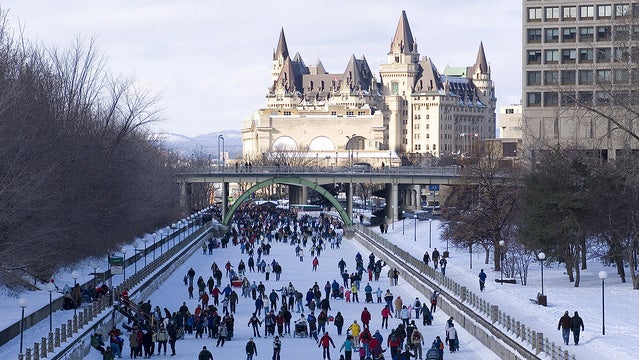
Growing up in Canada’s capital city, I was one of those kids who was more inclined to eye-rolling than to hometown pride. Ottawa was staid, tidy, a bureaucrat’s city. Our hockey team stank, and the best bands always skipped over us on their way from Montreal to Toronto. But there was one city fixture that I loved without embarrassment: the Rideau Canal skateway. Each winter, the canal that cut through the cityÔÇöa military relic, built on 19th century fears of an American invasionÔÇöwas transformed into a five-mile skating rink, the world’s longest. The frozen canal was more than a tourism gimmick: My grade school held gym classes on its plowed surface, and when I moved on to junior high I could lace up my skates and glide to school along its length; my dad would skate off in the other direction, headed to his downtown office building.
These days, the canal is a UNESCO World Heritage Site. Its season isn’t as reliable or as long as it once was, but it tends to be open from early January through early March, weather permitting. It hits its peak during the first three weeks of February, when Ottawa’s Winterlude festival takes place on and around it. There are skate rental shacks, hot chocolate stands, and other services available right on the ice.
Get Your Yurt on at Yellowstone (Wyoming)
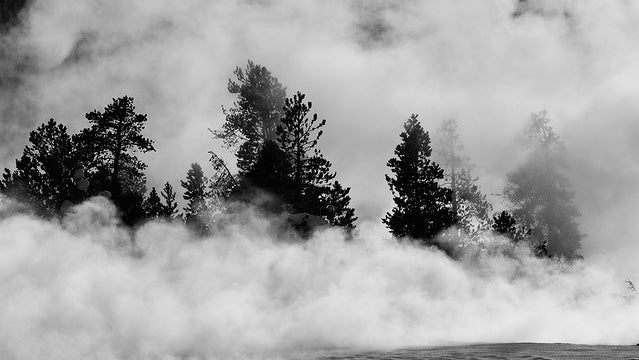
Tucked into a corner of the Yellowstone backcountry you’ll find Yurt Camp. Operated by , it’s a miniature village of yurts and tents, a home base for cross-country ski touring. The camp includes a sauna, a couple of main, communal yurts, and small two-person sleeping tents, plus a (heated) outhouse. A network of ski and snowshoe trails runs from the camp into the vastness of the park, and four- to eight-day guided trips begin at $1,000.
Learn to Fly (Park City, Utah)
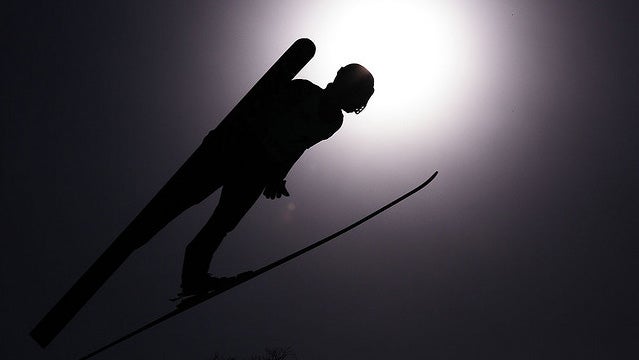
Yep, they’re letting ordinary, gravity-bound civilians try the ski jump these days in Utah. The also offers programs for youth or adults who want to give freestyle skiing or aerials a shot. Head to Park City if you dare.
See Some Serious Ice at Sirmilik National Park (Nunavut)
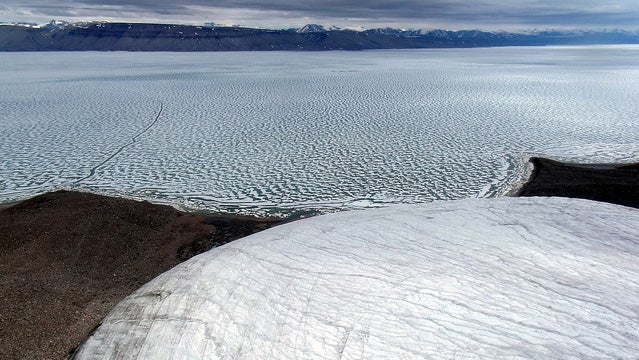
In Canada’s , glacier ice meets sea ice in a harsh, wild, High Arctic setting. The park is reachable by boat or by snowmobile from the nearby Nunavut communities of Pond Inlet and Arctic BayÔÇöonly licensed outfitters are allowed to bring you into the park.
Sirmilik is as remote as it gets, with glacier and avalanche dangers, roaming polar bears, extreme weather, and limited local rescue capabilities. Any ski-touring trip here should be carefully planned. The park website emphasizes the importance of building in time for weather delays and other hold-ups. “Travelers may find that their personal itineraries are in conflict with the schedule dictated by wind, cold, and storm,” the site notes. “If you come north with an inflexible schedule, you run the risk of remembering your once-in-a-lifetime trip only for its frustrations. But come prepared to accept the Arctic on its own termsÔÇöand it will open its heart to you.”
Watch the World’s Toughest Endurance Athletes (Alaska; Yukon)
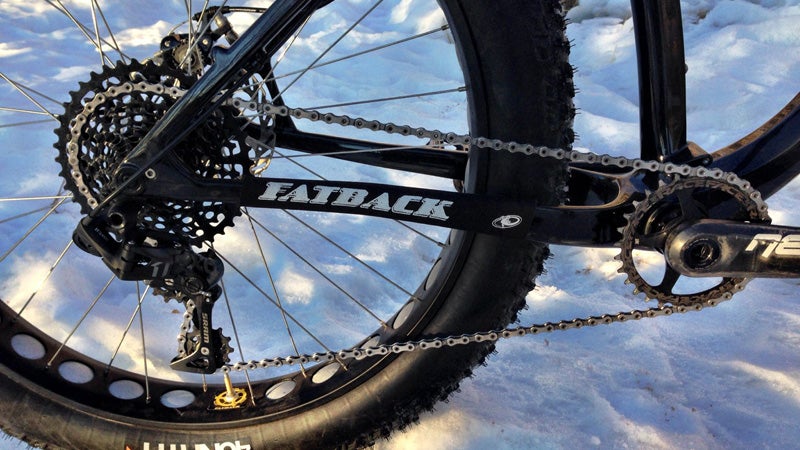
The noise is like nothing else on earth: Hundreds of huskies barking, screeching, howling, and moaning as they wait impatiently to get harnessed up and released from the start line. The dogs are amped up with enough energy to carry them through 1,000 miles of wilderness, often running about 100 miles a day. The scene at the start of a major dog sledding race has to be heard to be believed.
Long-distance mushing isn’t much of a spectator sportÔÇöits most famous races, the Yukon Quest and the Iditarod, each pass through a thousand miles of remote northern wilderness, where the Internet comes in by satellite, if at all, and any camera crews would have to follow along by snowmobile or by ski plane. Good luck convincing network TV to send their people into Alaska’s mountain passes in the heart of winter.
But you can watch the race starts, and see the dogs and their frost-bearded mushers tearing off down the trail. The Yukon Quest takes place in early February, and runs between Whitehorse, Yukon, and Fairbanks, Alaska; its start and end points alternate each year. In 2013ÔÇöthe 30th running of the QuestÔÇöthe race will begin in Whitehorse on February 2. The next month, on March 2, the Iditarod begins in downtown Anchorage.
Get Out of the Climbing Gym and Tackle an Ice Wall (Canadian Rockies)
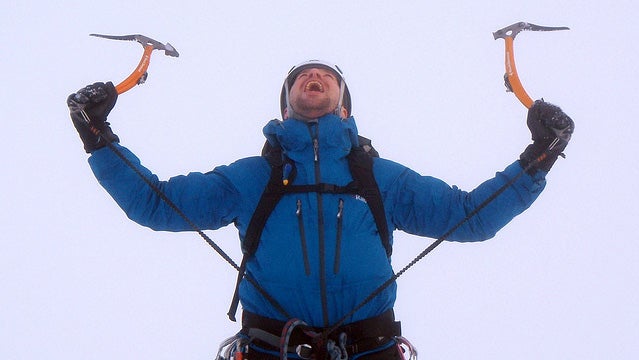
Step away from the molded handholds. Why spend the winter climbing plywood under fluorescent bulbs when you could be outdoors, working your way up a frozen waterfall?
Some of the continent’s best ice climbing is found in the Alberta Rockies. Heaps of outfitters in Banff, Lake Louise, Canmore, and Jasper offer lessons, guided trips, and gear rentals.
Go Fly a Kite
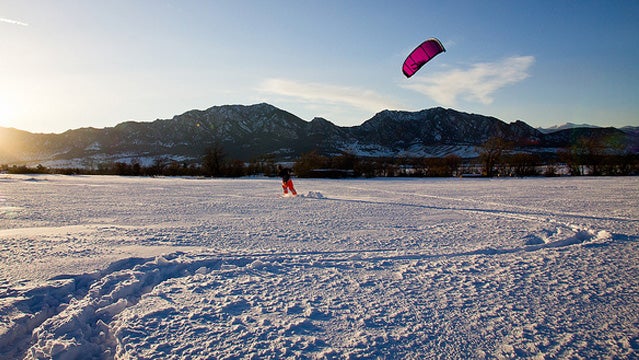
Snowkiting has blown up in the last few years. These days, you can kite-ski or kite-board just about anywhere you can find both snow and wind, but the Rocky Mountain states of Idaho, Montana, and Colorado are good bets to get started. Boise-based offers a range of beginner courses as well as custom lesson packages.
Go Winter Water Rafting (Michigan)
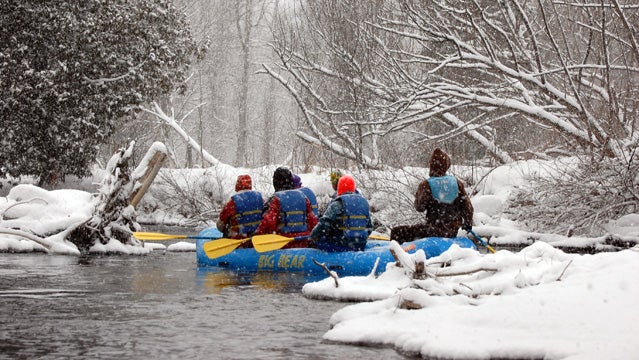
In Michigan, river rafting isn’t just a summer sport. offers guided winter rafting trips down the flatwaterÔÇöbut fast-movingÔÇöSturgeon River, the swiftest river in the Lower Peninsula. Layer up and drift through fresh-falling snow on a 90-minute float trip. Prices start at $34 per person for groups of six or larger; smaller groups pay a few dollars more.
Admire Frozen Masterpieces (Fairbanks, Alaska)
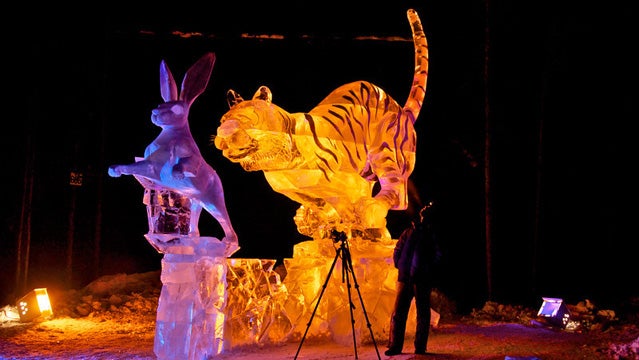
Plenty of winter festivals across the continent put ice sculptures on display during the festivitiesÔÇöOttawa’s Winterlude and Quebec City’s Carnival are sure betsÔÇöbut one of the most impressive options is the , held in Fairbanks, Alaska, each year. The event is divided into single-block and multi-block carving competitions, and spectators can see the actual carving taking place in late February and early March. (After that, the pieces remain on display.)
The 2013 championships begin February 26. A day pass to the Ice Park is $10, or $5 for children six-12; kids under six are admitted free.
Hike a Frozen River Canyon (Jasper, Alberta; Banff, Alberta)
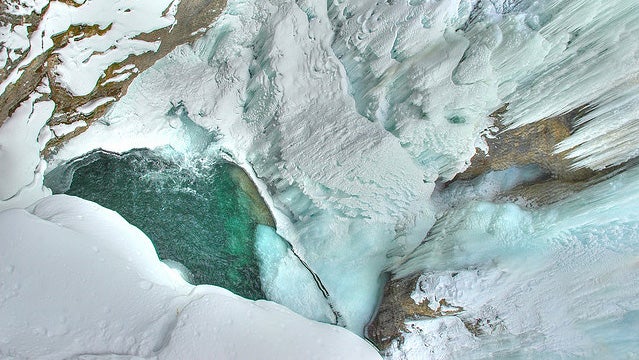
Strap on your ice cleats and head into a Narnia-worthy ice wonderland. In Banff, Jasper, and Canmore, a handful of outfits offer guided walks through the frozen-solid river canyons of the Canadian Rockies, past all-natural ice sculptures and waterfalls paused in mid-plunge. Try for a three-hour trip along the frozen floor of Maligne Canyon, the deepest in Jasper National Park. Cleats and boots are provided; tours cost $55, or $27.50 for children.
Find a Sweet Retreat
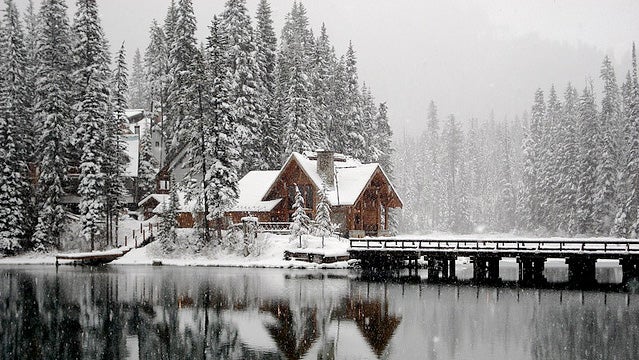
We all need to hibernate once in a while. Ready for some wild winter downtime? Break away from the ski-resort crowds and head to a remote mountain lodge instead.
Alaska’s is 200 miles north of Anchorage on the Iditarod Trail. It’s accessible only by ski plane, and it offers private cabins, a communal main lodge for decadent mealsÔÇönightly wine and cheese tastings feature cheeses flown in from ManhattanÔÇöand a hot tub with a big mountain view.
Further south, the is tucked away inside Yoho National Park, just outside the Alberta mountain town of Lake Louise. The surrounding area is laced with cross-country ski trails, and if you decide to head back into civilization for the day, the Banff, Lake Louise, and Canmore ski hills are all within an easy commute.
Way out east, the brings western mountain style to far eastern Quebec. The lodge office is based in the town of Cap-ChatÔÇöfrom there, lodge staff bring you the rest of the way in by snowcat. Rentals of beacons, snowshoes, splitboards, and touring gear are included in room rates.
Slide Like an Olympian
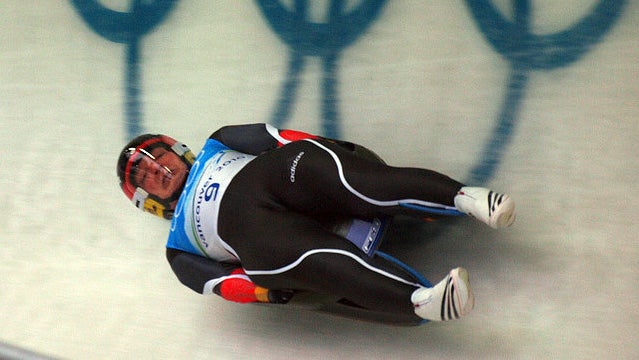
Always wanted to climb into a bobsled, or shimmy onto a luge, and fly down a steep, narrow track at obscene speeds? Now’s your chance.
All three North American host cities for the Winter Olympics have opened their tracks to the public. At the , a bobsled ride with a trained pilot goes for $159. Or, for the same price, you can try the SkeletonÔÇöthat means hurtling down the track face first, and solo. In Park City, the charges $200 a head for a bobsled ride, or $50 to go through four curves of the track on a Skeleton sled. charges a bargain $80 for the bobsled or $65 for the Skeleton.
Meanwhile, in , Michigan, there’s a shortened luge track that was designed for beginners by a former OlympianÔÇöthere, a luge ride (including two and a half hours of instruction before you slide) goes for just $40.
Make a Winter Ascent of Mt. Rainier (Washington)
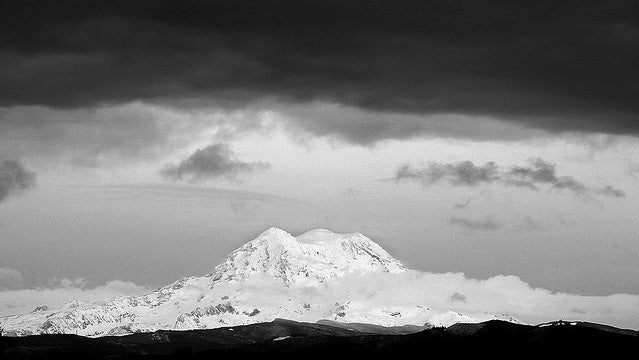
Summiting Rainier is a challenge any time of year. Making the climb in winter, when unpredictable snow storms and high winds hit the mountain, is substantially tougher. The National Park Service recommends that only experienced mountaineers who know their way around avalanche country attempt a winter ascent. The maximum winter group size is 12, and the NPS recommends a minimum of four climbers.
offers a seven-day guided winter ascent for $1,850.
Cruise the Inside Passage (Alaska)
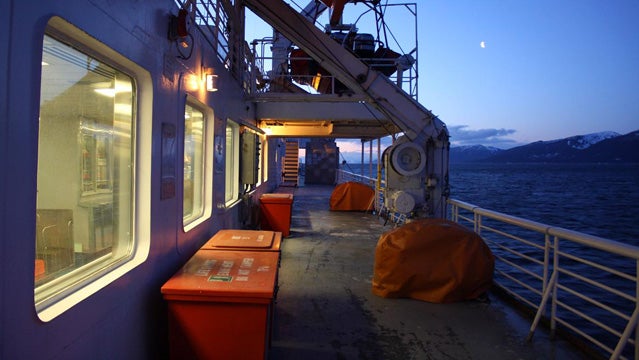
I know, I know. The cruise lines don’t sail to Alaska in the winter. But the ÔÇöbetter known as the state ferryÔÇönever hibernates. And wintertime really is the best time to sail the passage: There are no crowds in the ports, the chilly weather brings clear skies and big mountain views, and the only folks riding the ferries are friendly locals.
You can climb aboard in Bellingham for the full three-day ride north, or fly into Juneau, Sitka, or Ketchikan for a shorter cruise. Reserve a cabin, roll out a thermarest and sleeping bag in the lounge, or head outside and brave the solariumÔÇöa semi-covered area on deck where the air is fresh and cold and the heat lamps burn all night. And don’t forget to stop by the onboard bar, where you’re just about guaranteed to have someone tell you all about how they came up to Alaska for a visit 30-odd years ago, and they haven’t left yet.
Mix Up a Hot Cocktail
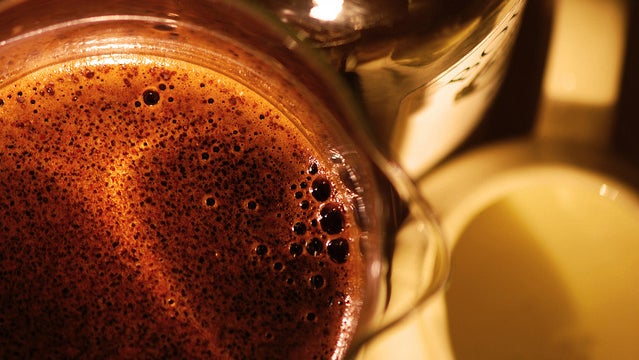
Ditch the ice cubes and stir up a hot adult beverage instead. Try an Irish coffeeÔÇöcoffee with Irish whiskey, a dash of brown sugar, and a topping of cream, fresh or whipped. Or get medicinal with a hot toddy: whiskey, boiling water, and various combinations of honey, lemon juice, cloves, or cinnamon. Hot buttered rum is another classic, made by mixing butter, brown sugar, and spices (usually cloves, cinnamon and nutmeg) in a mug, and adding dark rum and boiling water. Mulled wine isn’t a cocktail, but it is deliciousÔÇöand it’ll warm your soul. Finally, I like to keep it simple and festive by spiking my hot apple cider with a little spiced rum.
Get Motorized
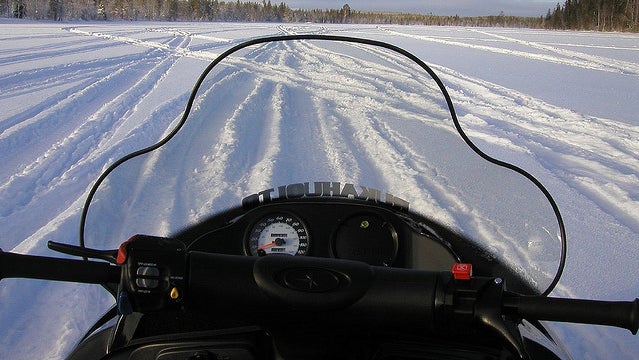
In the undying battle between skiers and skidooers, my sympathies lie with the non-motorized crowd. But here’s the thing: Riding a snowmobile is fun. Loud, stinking fun. And it needs to be tried at least once before you write it off. So gas up, bundle up, and make like Todd Palin. Snowmobile tours and rentals are found wherever snow and gearheads cross paths.
Visit the North Pole
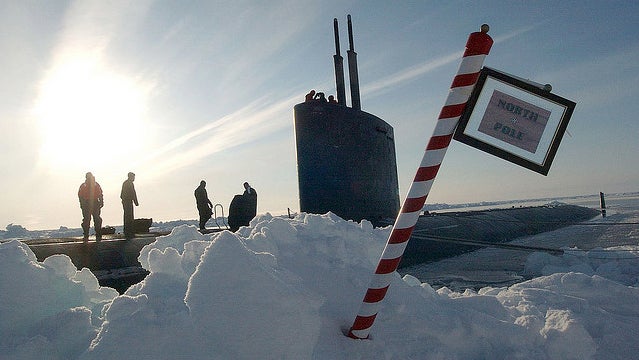
It doesn’t get any colder than this. Trek to the PoleÔÇöor fly there, or waft there in a hot air balloon. offers customized North Pole visits, while Nunavut-based offers both guided trips and the specialized training to let you take your own shot at it.
Surf in the Snow (Tofino, British Columbia; Haida Gwaii, British Columbia)
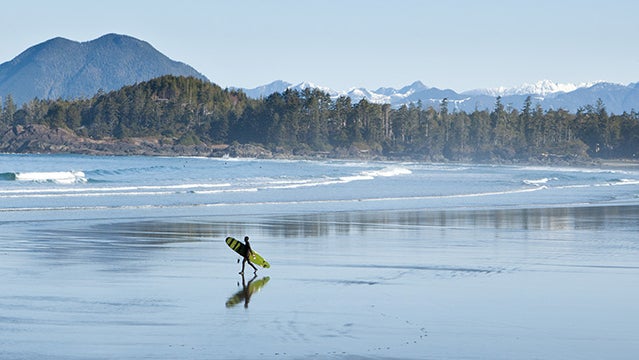
When Canadians talk about cold-water surfing, we don’t mean NorCal cold. Tofino, on the west coast of British Columbia’s Vancouver Island, is Canada’s designated surf town. It’s home to at least a dozen surf schools and surf shops, and most of them operate year-round, winter weather be damned.
A long ways further north, there’s a small but growing surf scene on Haida Gwaii, the cluster of rainforest islands just west of the B.C.-Alaska border. The waves are best here from October to May, when the snow flies and the aurora borealis lights up the long nights. North Beach Surf Shop has rentals and lessons.
Visit the Continent’s Most Remote National Park (Nunavut)
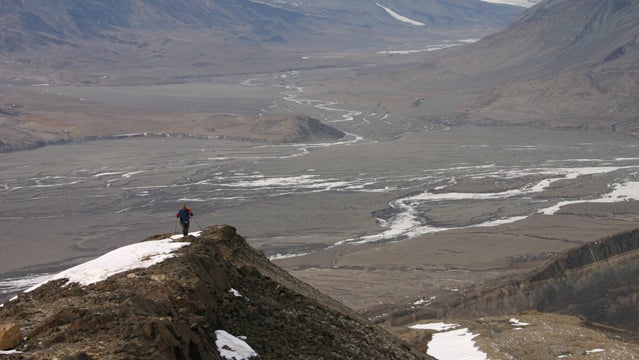
Welcome to the True North. Canada’s is on Ellesmere Island, way beyond the Arctic Circle, and more than 400 miles north of the country’s most northerly community, Grise Fiord. From here, you’re within a few hundred miles of the North Pole. The only way in is to charter a Twin Otter from the park’s gateway community of Resolute BayÔÇöa cool 600 miles away.
Ski touring in Quttinirpaaq requires total self-sufficiency, and if you’re looking for powder, forget about it. Says Parks Canada: “Those who seek an alpine powder snow ski experience will not find it in Quttinirpaaq National Park. Windslab is common, snow cover is variable, and deep powder is very rare. However, if you think of ski mountaineering as an alpine adventure involving skiing, exploration, and climbing, Quttinirpaaq National Park offers unlimited possibilities. The rock is rough granite, the ice is steep and solid, and many peaks have never been climbed.”
Intrigued? Start saving your pennies: Parks Canada estimates that a one-way, four-hour flight into the park will run you $15,000.
Splash Out on a Heli-Skiing ║┌┴¤│ď╣¤═° (Alaska)
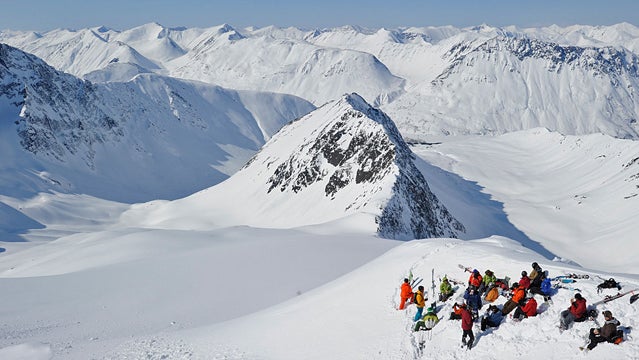
The numbers are staggering: Last year, Alaska’s Chugach Range had received more than 700 inches of powder by late February. Yep, we’re talking upwards of 60 feet, with months of winter to go. Add in the state’s thin population, plus the presence of just one resort in the areaÔÇöAlyeska, 25 miles outside AnchorageÔÇöand the result is an absolutely silly quantity of untouched mountain snow to play in.
For flexibility, you can’t beat . The outfit partners with Alyeska to allow back-up resort access or cat-skiing days when the weather tanks and the helicopter can’t fly. The resort partnership also allows for a la carte heli-skiing: rather than being locked into a longer package, you can purchase a single day. A full day of heli-skiing goes for $1,175; multi-day packages start at $3,800, including resort lodging, and climb toward five figures from there.
Run, Bike, or Ski a Winter Ultramarathon (Yukon; Wisconsin)
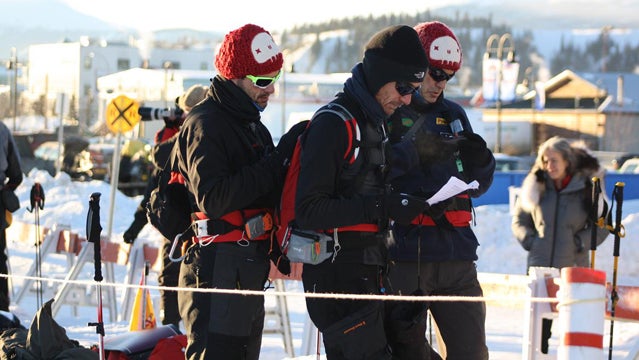
This one’s for the sufferfest crowd. Regular ol’ ultramarathon not challenging enough for you? Try running one at 20, 30, or 50 below.
One of the toughest winter races out there is the , which begins in Whitehorse, capital of the Yukon, each year. It’s choose your own adventure: You can run, snow-bike, or cross-country ski, and you can go for a regular marathon distance, 100 miles, 300 miles, or 430 miles, all the way to Dawson City. The route follows the Yukon Quest sled dog trail a day after the dogs come through, so mind where you step. This year’s race begins on February 3, 2013.
Another extreme Yukon option is the , named for the latitudinal coordinates of the Arctic Circle. The race runs along the Dempster Highway and the Tuktoyaktuk ice road from just south of the Circle to the shore of the Arctic Ocean. Runners can go for either 120 or 350 miles. This year the 6633 goes on March 22, 2013.
Slightly saner is the , which took place in northern Wisconsin from December 28-30, 2012. Racers can run, bike, or ski through 35, 75, or 150 miles of a Great Lakes winter. Totally reasonable, right?
Imbibe, Outdoors (Michigan)
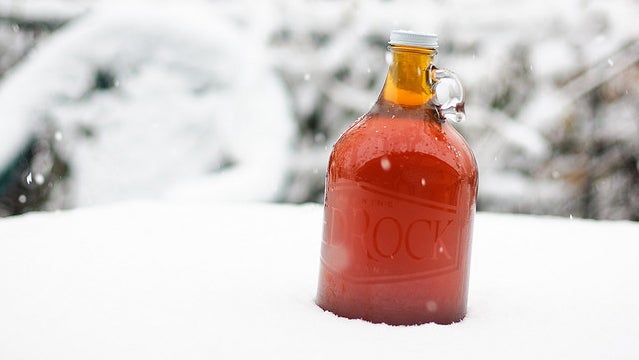
Michiganders have no fear of fierce winter weather. That’s why, instead of holding their winter craft beer festival in a hall or convention center, they do their tasting outdoors. This year’s is on February 23, 2013, in Fifth Third Park in Grand Rapids. Pack your long johns.
Ski Hut-to-Hut on the Wapta Traverse
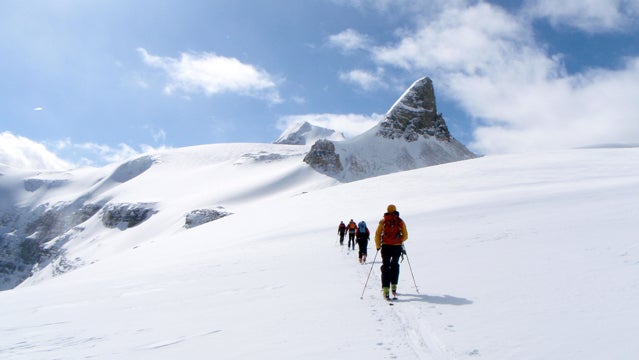
The is North America’s classic hut-to-hut ski route. It shadows the Icefields Parkway that runs from Jasper to Banff on the far western edge of the Alberta Rockies, and is generally done as a five-day trip. The traverse includes stunning scenery, plenty of powder, and glacier travel with its attendant dangersÔÇötravelers should come equipped with avalanche gear and crevasse-rescue skills. You’ll need a decent way-finding ability, too.
The Alpine Club of Canada operates the four huts along the way; reserving your bunk ahead of time is recommended, especially in the peak season for the traverse, February to April. The ACC also offers an eight-day guided traverse for $1,700; Canmore-based has four- and six-day guided trips starting from $1,000.
Come in From the Cold
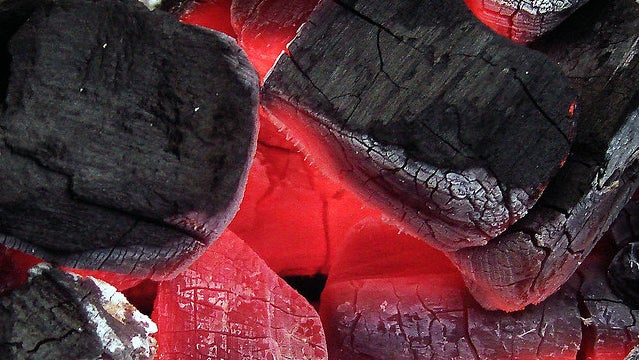
Even those of us who really, truly love the winter know that the best part of the cold is a well-earned thawing out. After a day of playing outside, there’s nothing quite like a good fireÔÇöwhether in a fireplace, a burn barrel, or a makeshift fire pit carved out of the snow. Feeling the life come back to your fingers and toes means another day of frozen consequences successfully cheated. In the classic short story “To Build a Fire,” Jack London put it best:
“On top, tangled in the underbrush about the trunks of several small spruce trees, was a high-water deposit of dry fire-woodÔÇösticks and twigs, principally, but also larger portions of seasoned branches and fine, dry, last-year’s grasses. He threw down several large pieces on top of the snow. This served for a foundation and prevented the young flame from drowning itself in the snow it otherwise would melt. The flame he got by touching a match to a small shred of birch-bark that he took from his pocket. This burned even more readily than paper. Placing it on the foundation, he fed the young flame with wisps of dry grass and with the tiniest dry twigs.”
“He worked slowly and carefully, keenly aware of his danger. Gradually, as the flame grew stronger, he increased the size of the twigs with which he fed it. He squatted in the snow, pulling the twigs out from their entanglement in the brush and feeding directly to the flame. He knew there must be no failure. When it is 75 below zero, a man must not fail in his first attempt to build a fireÔÇöthat is, if his feet are wet. If his feet are dry, and he fails, he can run along the trail for half a mile and restore his circulation. But the circulation of wet and freezing feet cannot be restored by running when it is seventy-five below. No matter how fast he runs, the wet feet will freeze the harder.”
“All this the man knew.”


